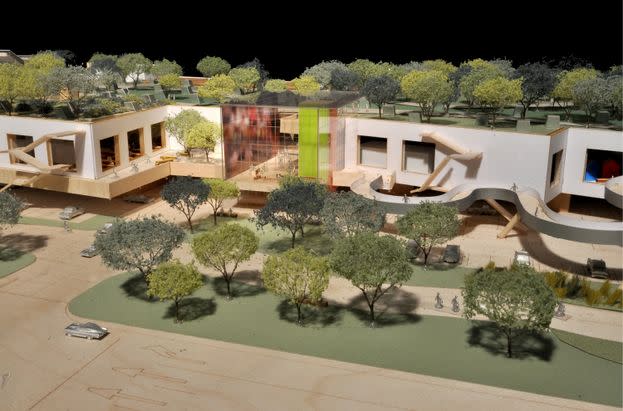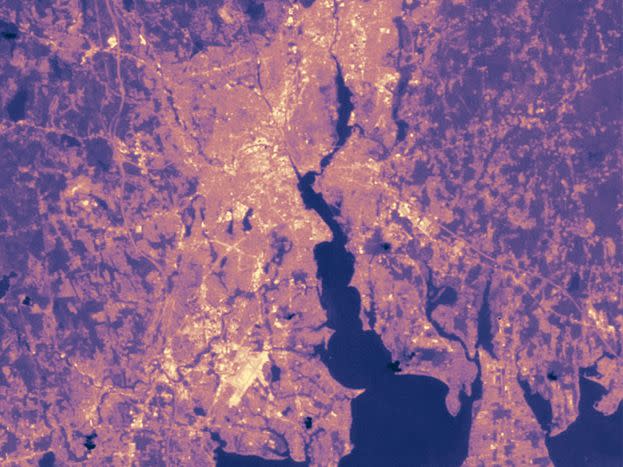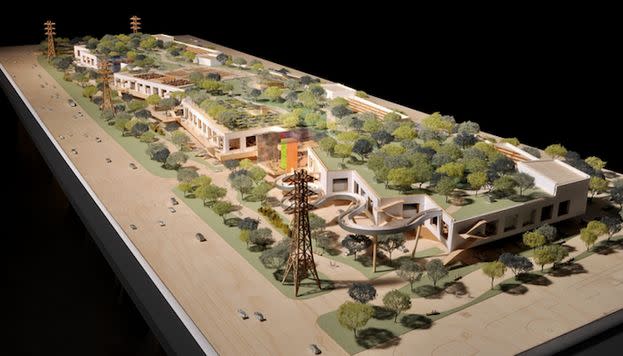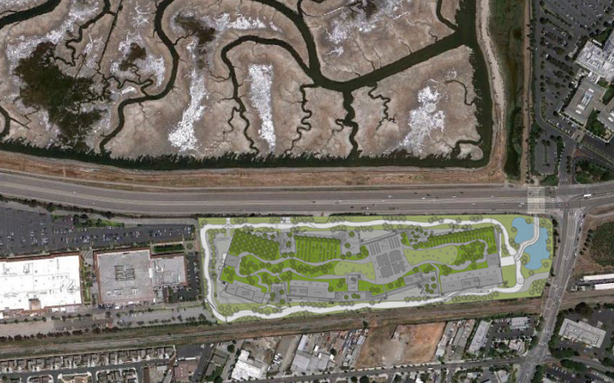How Green Is Facebook's Massive Green Roof?
RELATED: The Race to Be the Greenest Tech Company
Tech companies are always battling each other for the title of the greenest organization out there and these so-called green roofs are the latest turf for these environmentalist wars. Both Facebook and Google have a green roof project in the works. In Facebook's just released plans, it outlines the design for the top of its brand new Frank Gehry designed headquarters, which will certainly be green in color, at least. The social network says it will "plant a ton of trees" on the rooftop garden, which will span the entire length of the 433,555 square foot building. In fact, both of these spaces will look more like parks than roofs, with cafes and kiosks, sprinkled alongside pathways with outdoor seating. But beyond that what makes a green roof green?
RELATED: Five Best Friday Columns
Minimizes Runoff: Normal roofs push rainwater onto city streets where it has the potential to flood, increase erosion, and push sewage into rivers. It can also pick up more "impurities"—like bacteria and pesticides—on the way down through storm sewers, which eventually end up in water. All those plants on top of Facebook's roof will help mitigate this run-off. Other buildings also find alternative uses for water, such as using it for flushing toilets. One study found that green roofs reduced runoff by more than 75 percent, according to the EPA. Another one found othe green building tops could remove up to 95 percent of the cadmium, copper, and lead from stormwater runoff alone.
RELATED: Back Away from That Baby!
RELATED: Top Tweets: Birds Falling From the Sky Edition
The Urban Heat Island Problem: According to a NASA study urban cities can reach temperatures up to 16 degrees higher than surrounding areas because what is called the "urban heat island problem," which occurs because pavement generates heat. (You can see that effect on Portland below, via NASA). That, in turn, leads to increased use of electricity as well as greenhouse gas emissions and poorer air quality. Facebook's Menlo Park building isn't exactly in a city, but the area has plenty of office parks with tons of asphalt. By adding green space to an area, a green roof, however, can help combat this effect. Instead of absorbing the heat, like a dark roof or pavement, the area will naturally cool it, with the plants sucking up the sunshine.
RELATED: Searching for the Best Way to Punish BP
Natural Insulation: When dry, green roofs can absorb heat and act as insulators for buildings, reducing energy needed to provide cooling and heating, according to the EPA. When wet, they absorb and store large amounts of heat, the reducing temperature fluctuations. That, in turn, will also lower emissions from air conditioning and heating costs.
Vegetation Eats Pollution: All those plants up there will remove certain air pollutants and greenhouse gas emissions through "dry deposition" and carbon sequestration and storage. A 1,000 square foot roof can remove about 40 pounds of particulate matter from the air per year. That's about as much as 15 cars will emit in a single year of typical driving. Facebook is building a 433,555 square feet, meaning the potential benefit could be a lot bigger.
Of course, in all of this, you have to consider that Facebook's also expending a lot of energy (and money) to build the thing. But, according to this EPA report, the costs both environmental and financial are worth the savings. One University of Michigan study, for example, found that it cost $335,000 for a traditional roof in 2006 compared to $464,000 for the Earth friendly version. But, over its lifetime, the green one would save about $200,000 mostly in reduced energy needs for the building.




